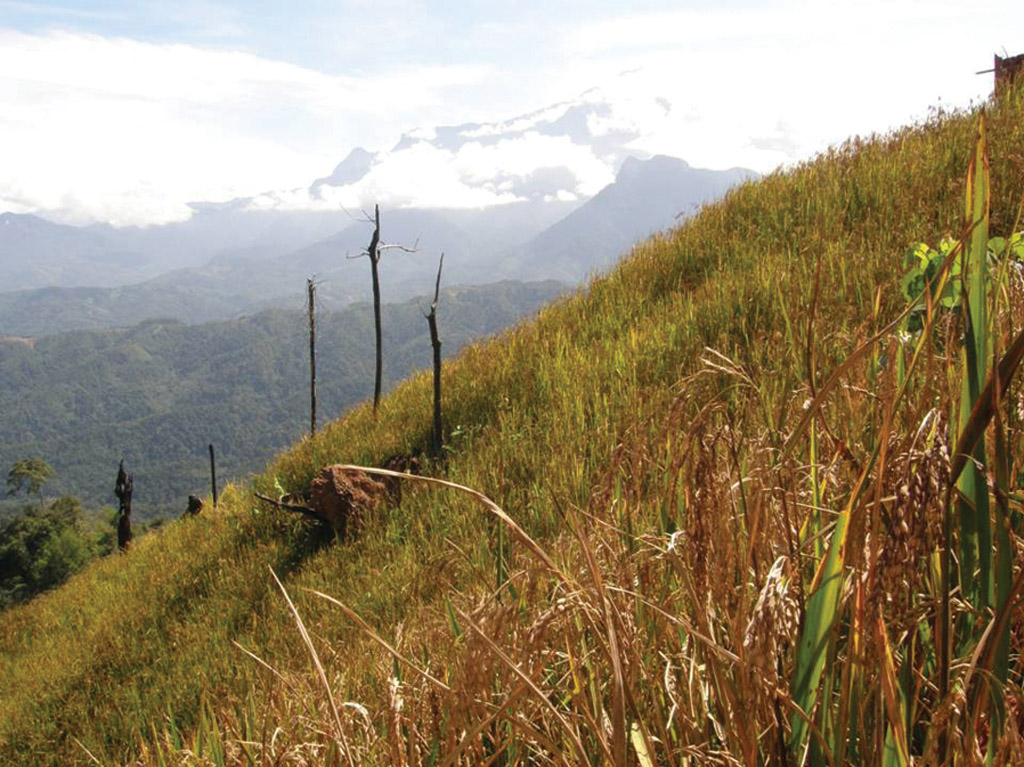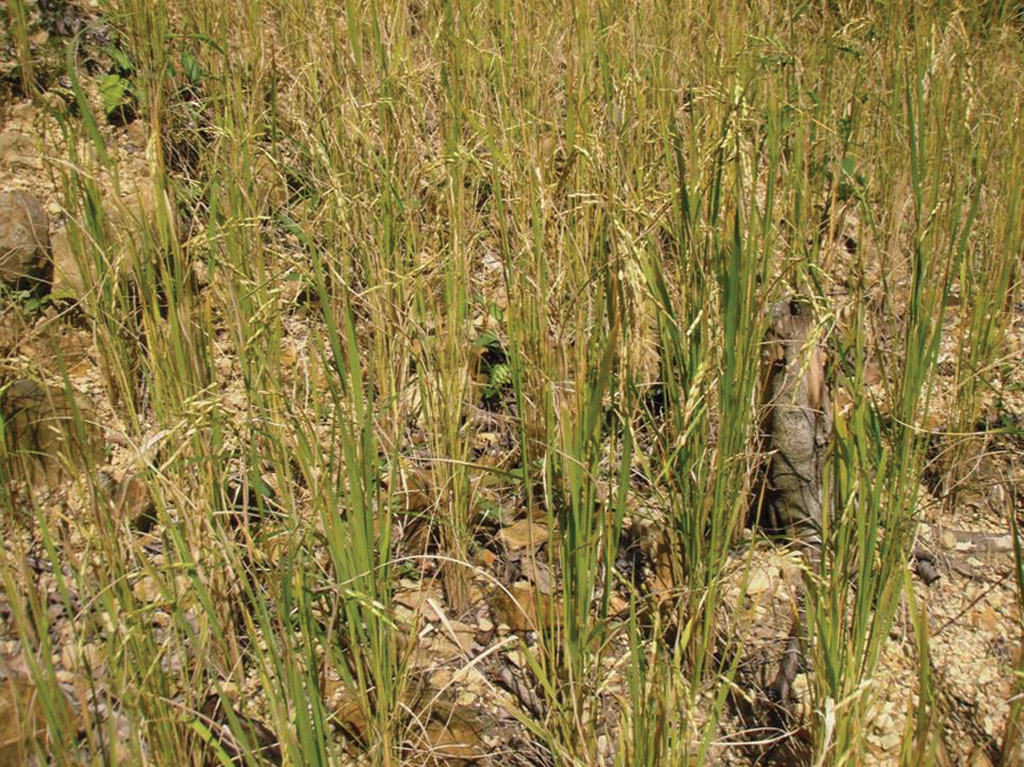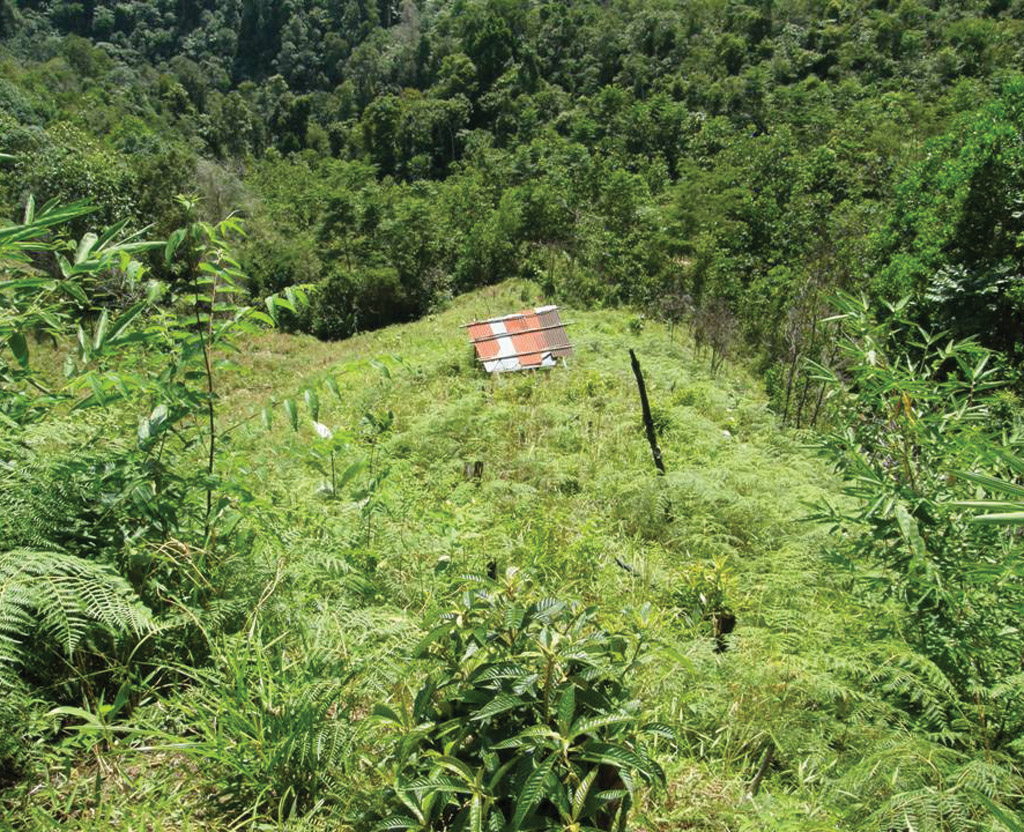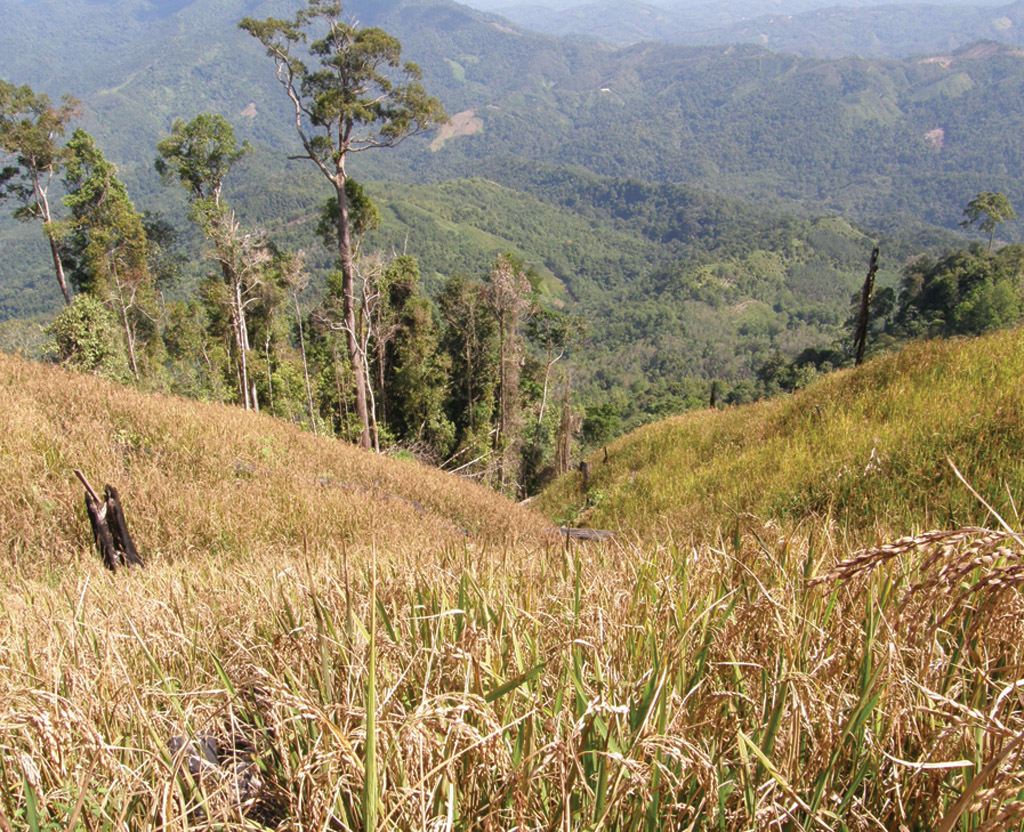3.2 Adapting biomes
Rice cultivators
Rice cultivators take the use of a biome to a higher level again. More than 500 million hectares (ha) are used for growing rice each year: that is more than 11% of the world’s arable land. Rice is the main food for more than half of the world’s population – for most of those living in China, India and Indonesia. There are two types of rice cultivation: dryland (or upland) rice and wet rice.
Rice is a subsistence crop. It is grown by the family and consumed by the family. Only 5% of the world’s rice crop is exported.
Dryland (or upland) rice
Here the forest is cleared and the rice is planted. It is often grown on very steep slopes, as shown in Sources 3.16 to 3.19. The crop relies on rainfall.
The biome has been significantly altered. The original vegetation has been removed. Most of the wildlife associated with that vegetation has gone. A new biome is now in place. This biome is controlled by the people who develop the plots.
As the plots are on steep slopes it is highly likely that landslides will occur, because the vegetation which protected the slope and held it together has been removed. Upland rice represents about 13% of the rice area planted annually but only produces around 4% of the rice produced annually. Almost 100 million people in Bangladesh, Cambodia, China, India, Indonesia, Myanmar, Thailand and Vietnam depend on this rice source.
Wet rice
Wet rice cultivation takes the human impact on biomes to a whole new level.
The impacts on the original rainforest biome are easy to identify. The vegetation cover has again been removed, which means the associated wildlife has had to find alternative habitat.
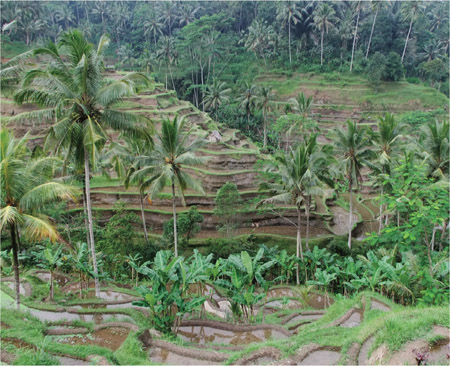
Additionally, the land has been sculpted so that fields can be created. The flow of water through this system is precisely managed. Some elements of the original biome remain – those which can provide food – but the rest have been removed.
In terms of humans affecting rainforest biomes, this would appear to be the top of the pyramid, but it is not.
Commercial farmers
Earlier in the chapter there was a reference to the scale of this. The chapter has followed the increasing impact humans have had on the rainforest biome. There are two uses of this biome which have not yet been addressed. First, it is necessary to move from the global scale to the national scale.
Australia is one of the world’s major producers and exporters of sugar. Sugar is extracted from a grass that grows easily in the hot, wet environment of the tropics.
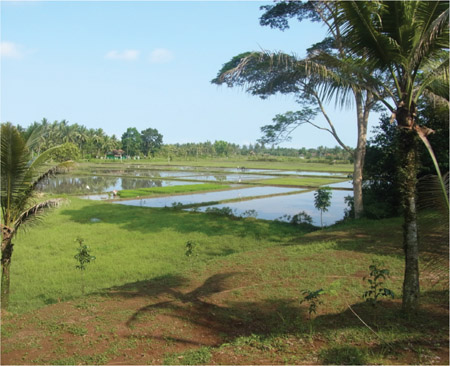
Intensive agriculture
The Tweed River valley and the Ord River Scheme have extensive areas of sugar cane, but the areas are still too small to show on a map of Australia.
It is interesting that both these areas differ from the main sugar-growing areas. Most sugar-growing areas produce one crop per year using natural rainfall. The crop in New South Wales takes 15 months to mature, because this area is cooler than northern areas. The crop in Western Australia is grown using irrigation from the Ord River Dam.
There are approximately 6000 sugar cane growers in Australia, with the majority on the east coast. Farms are usually small – around 100 hectares.
This is why sugar cane farming is described as an ‘intensive’ industry. The farmer owns a small area of land, and grows a crop which has a high yield and a high value. The farm is often highly mechanised and uses large amounts of fertilisers, pesticides and weedicides. The impact on the original biome is significant.
Source 3.22 shows the sugar cane area around Mackay, Queensland.
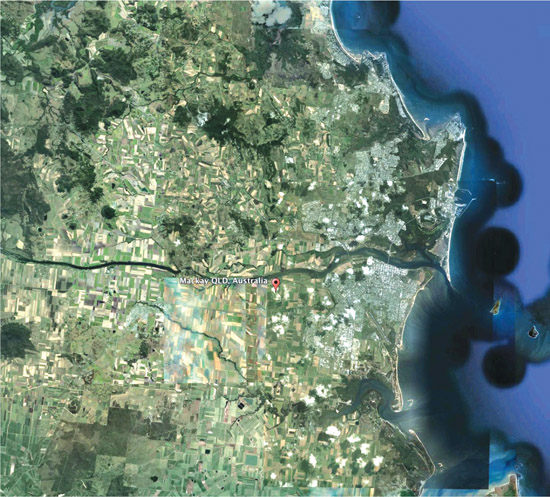
Machinery is also used extensively in the industry, to clear the flat land for farming. The hills stand out in the image – they still have remnants of the original biome on them, at least partly because machinery works best on flat land.
Source 3.23 Australia – economic activity
DEVELOPING YOUR UNDERSTANDING 3.5
Australia has large tracts of extensive agriculture. These farms are huge in area.
Some make extensive use of machinery, but others do not. Choose one extensive agriculture activity in Australia and report on the following:
- Where is it located?
- Why is it located where it is?
- What was the original biome?
- How has that biome been affected by the economic activity?
- How might the biome be more sustainably managed in the future? Present your research in a report.
The forest of the Amazon provides 20% of the world’s oxygen. Wet rice fields contribute between 100 and 500 million tonnes of methane gas (a greenhouse gas) to the atmosphere each year.
Changing biomes over time
Biomes change over time as different people recognise different uses for it. This geographical concept is called sequent occupance. One example is the Redcliffe Botanic Gardens.
DEVELOPING YOUR UNDERSTANDING 3.6
Copy the table below and create a Plus, Minus, Interesting Chart (PMI Chart) detailing the different ways in which various types of agriculture impact on biomes. An example has been provided.

| Plus | Minus | Interesting | |
|---|---|---|---|
| Hunting and gathering | Low impact on resources | Resource availability can be affected by disasters such as flood or fire | Still practised today in some areas |

